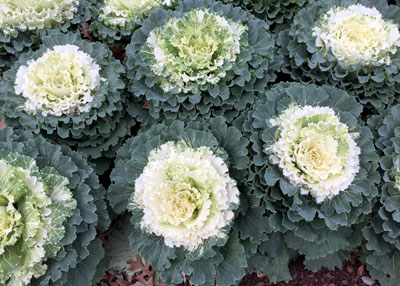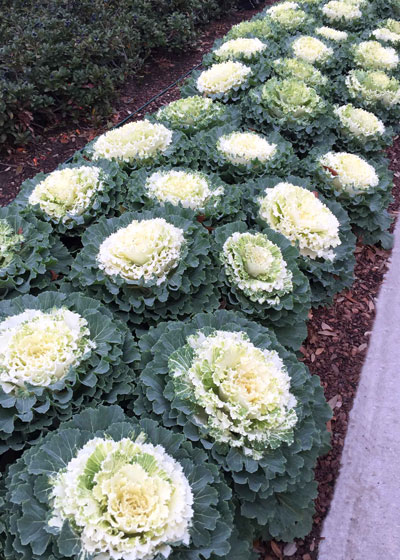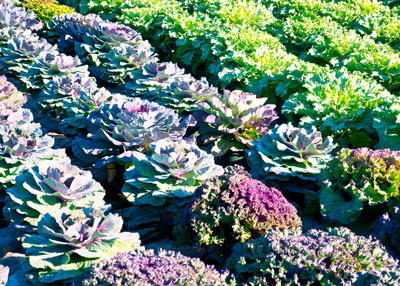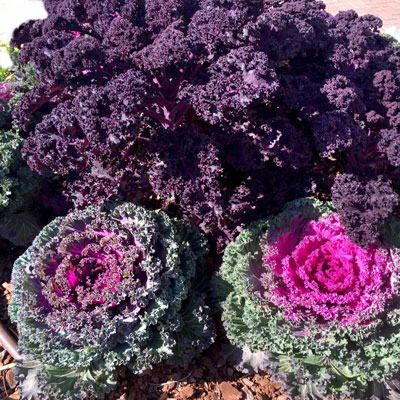Plant of the Week – January 7, 2021: Ornamental Cabbage, Kale
My Apple phone and iCloud storage package send me periodic “On this day” collections of photos I’ve taken.


These two photos got mixed in with a group of some of the most handsome grandkids you ever saw, but since this is a gardening newsletter, I decided to show these instead.
These plants have the distinction of being both beautiful and edible. That’s a rather unusual combination, so it makes them doubly special.

Ornamental cabbages are generally pretty similar to what you see in your vegetable garden – big, rounded heads, but with large, succulent leaves of blue-green, pink, magenta and white.
Ornamental kales are different. First of all, they’re really frilly. Some are in heads, but others grow more open, like a sprawling wildflower bouquet being clutched by a child’s hand, and still others are upright/almost shrub-like.

I’m going to start with that last one. The tall maroon-red kale that you see being used all across Texas each winter is a variety called Redbor, listed by the National Garden Bureau as a Scotch kale. It grows to 2 to 3 feet tall, making it the ideal anchoring plant for a large patio pot or the perfect backdrop to a bed of pansies, pinks or even shorter types of kale and cabbage. Its flavor is described as “sweet,” so there we go back into its alternate life of being a part-time source of nutrition.
It’s the shorter, head-forming types of ornamental kale that are the most colorful, however. Series names like Chidori, Kamone, Glamour and Peacock, among many others, have brought us plants with all ranges of reds, pinks, near-lavenders, blue-greens and whites. There are fewer varieties of ornamental cabbage, but they, too, are showy in the landscape. And newer varieties are coming along every year.
When we plant all of these in October or November, usually from 1-gallon pots, they’re essentially all blue-green, but as the winter cold unfolds, their colors turn dazzlingly brilliant.

Caring for cabbage and kale…
• Keep cabbage and kale plants moist should you encounter dry spells.
• Apply a high-nitrogen, top-quality fertilizer to them in December.
• As the plants start to elongate and develop oddly shaped cones out of their middles, that means that they’re bolting into flower. That will happen by late February or March, and that will be the time to replace them.
